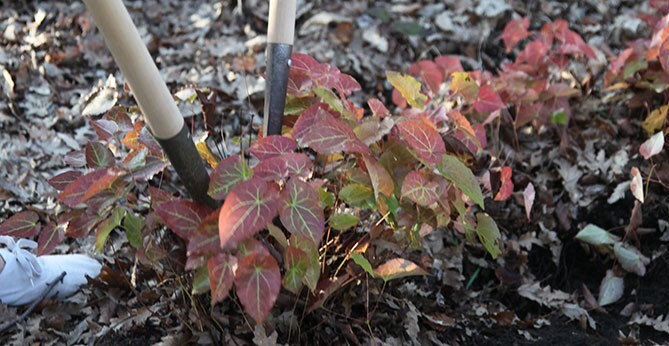
New flowers from old
Get bigger and better flowering displays from old perennials by lifting and dividing them now
Left to their own devices, most clump-forming herbaceous perennials will slowly lose vigour and produce fewer and fewer flowers as the roots become congested and the soil exhausted. The weakened plants will also become more susceptible to pest and disease attack. Fortunately, you can rejuvenate your plants in one fell swoop by lifting and dividing established clumps, replanting the younger more vigorous outer portions and discarding the old woody bits in the middle.
Why divide perennials?
- To get more flowers
- To get bigger flowers
- To keep fast-growers in check
- To get more plants
- To keep plants healthy
- To replenish the soil
- To remove perennial weeds
When?
Perennials are best divided either during early spring, before new growth gets in the way or during the autumn, after flowering has finished and the plant is going dormant. The soil will be moist and warm at these times too, encouraging quick re-establishment after planting. Borderline hardy herbaceous plants are best divided now, so that they have plenty of time to get established before the onset of winter.
How often?
Most perennials, including Alchemilla, Anaphalis, Aster, Astilbe, Astrantia, Campanula, Centaurea, Coreopsis, Dicentra, Doronicum, Echinacea, Euphorbia, Geranium, Geum, Helenium, Helianthus, Hemerocallis, Hesperis, Ligularia, Lysimachia, Polygonum, Primula, Prunella, Pulmonaria, Rudbeckia, Sedum, Sisyrinchium, Solidago, Tiarella and Trollius, benefit from dividing every two or three years. While others, such as agapanthus and peony, are best left undisturbed for many years because they flower better with a bit of congestion around the roots. A few, such as Anemone, actually resent root disturbance and will sulk after being divided, not flowering until their second or third year after being divided.
How to divide perennials
- Clear a space to work in and cut back any top-growth on the plant to be divided – leaving enough to hold on to when manoeuvring the rootball, but take care not to damage any new emerging shoots.
- Use a garden fork to loosen the soil around the rootball and carefully lift it out onto an old polythene sack on the lawn or patio – this will give you plenty of space to work around the clump.
- Most perennials can be teased apart by hand or carefully separated with a pair of garden forks held back to back. Others produce very tight, woody clumps and so may need slicing into section using a sharp garden spade instead. Plants with very fleshy roots can be divided into sections using an old pair of secateurs.
- Select divisions from the younger, outer portions of the rootball, making sure each division has plenty of roots and several undamaged buds or new shoots. Discard the central older, woody part of the clump.
- Prepare the planting site by adding lots of well-rotted organic matter, then replant the divisions with the shoots just showing above the soil. Firm and water well after planting and apply a generous layer of mulch, taking care not to pile it on top of the division.
Safety first
It is important to bear in mind that some perennials, notably euphorbias, have irritant sap, so make sure you wear gloves and cover your arms when handling these. Others, such as acanthus, are prickly so wearing thorn-proof gloves makes sense here, too. Whenever bending about in borders containing short support canes, eye-protection is also worthwhile.
Bonus plants
One of the best bits of gardening is sharing plants and you’ll have plenty to give away after a day spent dividing perennials. Pot up the best of the rest of the divisions into small pots filled with a mixture of soil and compost and label them before you forget what they are. Water well and place in a sheltered, lightly shaded spot. Once well rooted, you can give them to gardening friends and neighbours, or sell them for charity at the summer fate. Everyone’s a winner!
